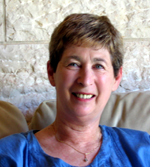By Dorothea Shefer-Vanson

MEVASSERET ZION, Israel (TNA)–I literally trembled with emotion when I held the two volumes ofPogrom Night 1938: A Memorial to the Destroyed Synagogues of Germany. Together they comprise over seven hundred pages which are packed with information about the more than one thousand synagogues and prayer rooms that existed in pre-WWII Germany and were burned, destroyed, pillaged or plundered on the night of November 9th 1938 which was given the derisive designation of Kristallnacht, the Night of Broken Glass, by its Nazi perpetrators.
The book contains concise texts giving the history, dates and vital statistics of each synagogue and community, and in many cases these are accompanied by photographs of the way the place looked before and sometimes after November 9, 1938. The work is, in fact, an encyclopaedic account of the life and times of the many Jewish communities that once existed in Germany, as it was defined by its 1937 borders. On a personal note, my heart lifted when I saw that what was once the small town of Sprottau in Silesia, the birthplace of my mother and today known as Szprotawa in Poland, is included.
The inside cover of the book shows a map of Germany on that fateful day. The map is in gray and is studded with tiny dots of white, giving the impression of innumerable spots of light. These denote the places where synagogues or prayer rooms existed and were destroyed or attacked that night. In one startling and concise graphic image the reader grasps the full extent of the tragedy of the Jews of Germany.
Forewords have been written by Wolfgang Ischinger, the former German Ambassador and now Global Head of Germany’s Allianz Group, and Malcolm Hoenlein, executive vice president of the Conference of Presidents of Major American Jewish Organizations, both of which contributed funds to support the project. But the main contribution and acknowledgement belongs to Professor Meir Schwartz, who instigated the project and has brought it to its final realization over the course of the last twenty years.
Professor Schwarz, who was born in Nuremberg in 1926, was sent on his own to what was then Palestine at the age of nine. In his professional career, becoming a world-renowned expert on hydroponics, Professor Schwarz helped to make the desert bloom, both in Israel and elsewhere, thus providing sustenance to many millions.
In his foreword to the book, Professor Schwarz relates that when he visited the town of his birth he found that the memory of the former Jewish community had been all-but erased. This was in 1988, when he happened to be in Germany attending an international biology conference. The local officials he spoke to had no knowledge of the synagogue that had once existed there, although Professor Schwarz remembered being present as a child and seeing it with his own eyes as it burned.
Thus it was that in 1988 he determined to set the record straight and create a memorial for all the synagogues that had once existed, forming the focal point of the Jewish communities that had once flourished throughout Germany. In the larger towns there were generally more than one synagogue, and these are all commemorated, as are even the tiny steiblach and prayer rooms that existed in the smaller, rural communities. Contrary to general belief, there were many Jews who lived in far-flung towns and villages in Germany, in Jewish communities that often consisted of just a handful of families.
Volume 1 also contains an extensive illustrated introduction relating the history of the Jewish community of Germany in considerable detail, with particular emphasis on that of Cologne.
Many people helped to bring this immense project to fruition, and the undersigned is proud to note her own small contribution as author of some of the texts. However, without Professor Schwarz’s guiding hand and powerful vision the book would never have come into existence. Having worked in the past as the editor and translator of publications put out by Israel’s central bank, I can appreciate how much care, time and effort has been put into the production of this complex, comprehensive and above all beautiful work.
These two volumes constitute a treasure-trove of information and will undoubtedly stand as a resounding achievement as well as a lasting memorial to the once-glorious Jewish communities of Germany.
*
Shefer is a freelance writer and author based in the Jerusalem suburb of Mevasseret Zion. She may be contacted via dorothea.shefer@sdjewishworld.com